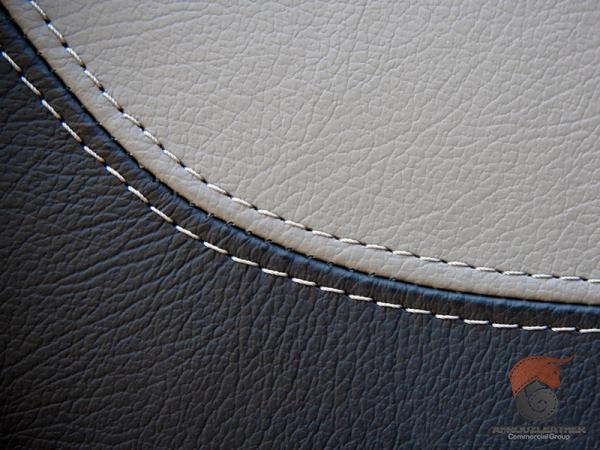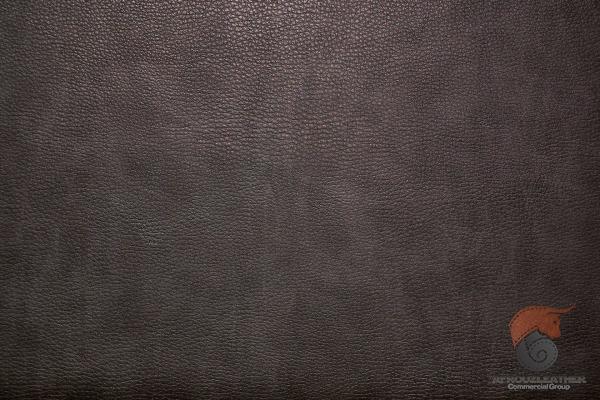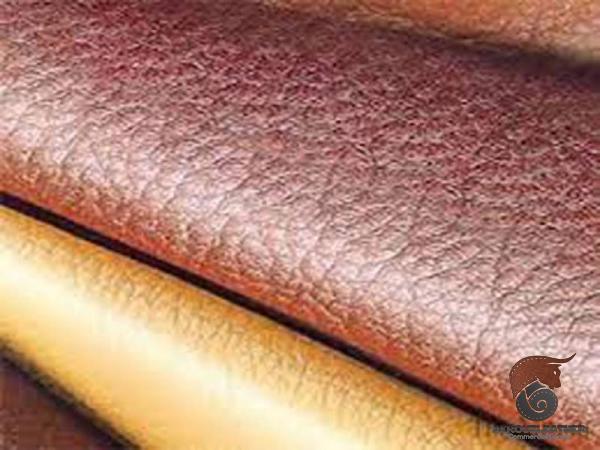Raw salted cow hides play a significant role in the global leather industry. These hides are obtained from cattle and go through a preservation process involving salting, which helps prevent decay and prepares them for further processing. In this article, we will explore the key features, uses, procurement, and factors to consider when purchasing raw salted cow hides for sale. I. Features of Raw Salted Cow Hides: 1. Quality: Raw salted cow hides vary in quality based on factors such as breed, age, and treatment. High-quality hides are characterized by even color, thickness, and minimal damage. 2. Size and Weight: Cow hides come in various sizes and weights, typically measured in square feet and pounds. The size and weight can influence their suitability for specific applications. 3. Hair-on or Hair-off: Depending on the buyer’s requirements, raw salted cow hides may come either with intact hair or fully de-haired. 4. Salt Content: The level of salt content in the hides is important to ensure proper preservation and prevent bacterial growth. II. Uses of Raw Salted Cow Hides: 1. Leather Industry: The primary use of raw salted cow hides is in the leather industry. Properly processed hides are transformed into leather products, including furniture, footwear, bags, garments, and automotive upholstery. 2. Manufacturing of By-products: Raw salted cow hides can also be used to produce by-products such as gelatin, bone meal, and glue, contributing to various industries. 3. Art and Craft: Hair-on cow hides are popular for artistic and craft purposes, often used in the creation of rugs, wall hangings, and other decorative items. III. Procurement of Raw Salted Cow Hides: 1. Direct Sourcing: Buyers can directly source raw salted cow hides from livestock farmers, abattoirs, or tanneries. This approach offers greater control over the quality and specifications of the hides. 2. International Markets: Raw salted cow hides are traded globally, and buyers can tap into international markets through importers, brokers, or online platforms. 3. Domestic Suppliers: Local suppliers often provide a convenient option for businesses seeking raw salted cow hides. Visiting local leather markets, trade fairs, or contacting wholesalers can help establish connections with reliable suppliers. IV. Factors to Consider When Purchasing Raw Salted Cow Hides: 1. Quality Assurance: Inspecting the quality of raw salted cow hides is essential. Factors such as hair type, thickness, color, texture, and uniformity should be evaluated to ensure suitability for the intended purpose.
leather
 2. Supplier Reputation: Choosing a reputable and trustworthy supplier is crucial for obtaining high-quality raw salted cow hides. 3. Transportation and Logistics: Proper handling and transport of raw salted cow hides are essential to maintain their quality. Buyers should consider logistical factors such as packaging, storage, and shipment options. 4. Regulatory Compliance: Adherence to legal requirements, including regulations related to environmental sustainability, animal welfare, and trade restrictions, should be ensured when sourcing raw salted cow hides. V. Pricing and Cost Analysis: 1. Pricing Factors: The price of raw salted cow hides is influenced by several factors, including quality, size, weight, and market demand. Premium quality hides typically command higher prices. 2. Possibility of Negotiation: Buyers may have room for negotiation, especially when purchasing in bulk or establishing long-term partnerships with suppliers. 3. Total Cost of Ownership: Besides the upfront purchase cost, buyers should consider additional expenses related to transportation, storage, processing, and any associated licensing or logistic fees. VI. Conclusion: The availability of raw salted cow hides for sale provides entrepreneurs and businesses with abundant opportunities in the leather and by-product industries. Understanding the features, uses, procurement methods, and important considerations when purchasing raw salted cow hides is crucial to ensure the desired quality and optimize overall value. By considering these factors, buyers can make informed decisions and establish successful partnerships with suppliers, resulting in high-quality raw materials for their specific business needs. Raw Salted Cow Hides for Sale: A Comprehensive Overview I. Features of Raw Salted Cow Hides Quality: When purchasing raw salted cow hides, one of the most important factors to consider is the quality of the hides. High-quality cow hides are characterized by even color, thickness, and minimal damage. The hides should not have any major scars, cuts, or blemishes, as these defects can affect the final product’s aesthetics and durability. Size and Weight: Raw salted cow hides come in various sizes and weights, typically measured in square feet and pounds. The size and weight of the hides can influence their suitability for specific applications. For example, larger hides may be more suitable for larger leather goods such as furniture upholstery, while smaller hides may be better suited for smaller items like bags and wallets.
2. Supplier Reputation: Choosing a reputable and trustworthy supplier is crucial for obtaining high-quality raw salted cow hides. 3. Transportation and Logistics: Proper handling and transport of raw salted cow hides are essential to maintain their quality. Buyers should consider logistical factors such as packaging, storage, and shipment options. 4. Regulatory Compliance: Adherence to legal requirements, including regulations related to environmental sustainability, animal welfare, and trade restrictions, should be ensured when sourcing raw salted cow hides. V. Pricing and Cost Analysis: 1. Pricing Factors: The price of raw salted cow hides is influenced by several factors, including quality, size, weight, and market demand. Premium quality hides typically command higher prices. 2. Possibility of Negotiation: Buyers may have room for negotiation, especially when purchasing in bulk or establishing long-term partnerships with suppliers. 3. Total Cost of Ownership: Besides the upfront purchase cost, buyers should consider additional expenses related to transportation, storage, processing, and any associated licensing or logistic fees. VI. Conclusion: The availability of raw salted cow hides for sale provides entrepreneurs and businesses with abundant opportunities in the leather and by-product industries. Understanding the features, uses, procurement methods, and important considerations when purchasing raw salted cow hides is crucial to ensure the desired quality and optimize overall value. By considering these factors, buyers can make informed decisions and establish successful partnerships with suppliers, resulting in high-quality raw materials for their specific business needs. Raw Salted Cow Hides for Sale: A Comprehensive Overview I. Features of Raw Salted Cow Hides Quality: When purchasing raw salted cow hides, one of the most important factors to consider is the quality of the hides. High-quality cow hides are characterized by even color, thickness, and minimal damage. The hides should not have any major scars, cuts, or blemishes, as these defects can affect the final product’s aesthetics and durability. Size and Weight: Raw salted cow hides come in various sizes and weights, typically measured in square feet and pounds. The size and weight of the hides can influence their suitability for specific applications. For example, larger hides may be more suitable for larger leather goods such as furniture upholstery, while smaller hides may be better suited for smaller items like bags and wallets.
Specifications of leather
 Hair-on or Hair-off: Depending on the buyer’s requirements, raw salted cow hides may come either with intact hair or fully de-haired. Hair-on hides are often used for decorative purposes, such as rugs or wall hangings, while hair-off hides are more commonly used for leather goods like footwear and garments. Salt Content: The level of salt content in the hides is crucial to ensure proper preservation. The hides undergo a salting process to prevent decay and bacterial growth. It is important to check the salt content of the hides to ensure that it is sufficient for effective preservation. II. Uses of Raw Salted Cow Hides Leather Industry: The primary use of raw salted cow hides is in the leather industry. After undergoing various processes, including de-hairing, fleshing, and tanning, the hides are transformed into high-quality leather products. These products include furniture, footwear, bags, garments, belts, and automotive upholstery. Manufacturing of By-products: Raw salted cow hides can also be used to produce by-products such as gelatin, bone meal, and glue. These by-products find applications in various industries, including food, pharmaceuticals, and manufacturing. Art and Craft: Hair-on cow hides are incredibly popular in the art and craft industry. These hides are often used for creating beautiful rugs, wall hangings, and other decorative items. Their unique patterns and natural textures make them highly sought after by artists and craftsmen. III. Procurement of Raw Salted Cow Hides Direct Sourcing: Buyers can choose to directly source raw salted cow hides from livestock farmers, abattoirs, or tanneries. This approach offers greater control over the quality and specifications of the hides. Direct sourcing also allows buyers to establish direct relationships with suppliers, reducing the likelihood of quality issues or supply chain delays. International Markets: Raw salted cow hides are traded globally, and buyers can tap into international markets through importers, brokers, or online platforms. International markets provide access to a wide range of suppliers and offer opportunities to explore competitive pricing and unique hide variations. Domestic Suppliers: Local suppliers often provide a convenient option for businesses seeking raw salted cow hides. Visiting local leather markets, attending trade fairs, or contacting wholesalers can help establish connections with reliable suppliers. Buying from domestic suppliers may offer advantages such as faster delivery times, reduced shipping costs, and the ability to inspect the hides in person before making a purchase. IV. Factors to Consider When Purchasing Raw Salted Cow Hides Quality Assurance: Inspecting the quality of raw salted cow hides is essential before making a purchase. Buyers should pay attention to the hair type, thickness, color, texture, and overall uniformity of the hides. It is also advisable to check for any signs of damage or defects that may affect the final quality of the leather. Supplier Reputation: Choosing a reputable and trustworthy supplier is crucial for obtaining high-quality raw salted cow hides. Buyers should conduct thorough research, read reviews or testimonials, and request samples if possible.
Hair-on or Hair-off: Depending on the buyer’s requirements, raw salted cow hides may come either with intact hair or fully de-haired. Hair-on hides are often used for decorative purposes, such as rugs or wall hangings, while hair-off hides are more commonly used for leather goods like footwear and garments. Salt Content: The level of salt content in the hides is crucial to ensure proper preservation. The hides undergo a salting process to prevent decay and bacterial growth. It is important to check the salt content of the hides to ensure that it is sufficient for effective preservation. II. Uses of Raw Salted Cow Hides Leather Industry: The primary use of raw salted cow hides is in the leather industry. After undergoing various processes, including de-hairing, fleshing, and tanning, the hides are transformed into high-quality leather products. These products include furniture, footwear, bags, garments, belts, and automotive upholstery. Manufacturing of By-products: Raw salted cow hides can also be used to produce by-products such as gelatin, bone meal, and glue. These by-products find applications in various industries, including food, pharmaceuticals, and manufacturing. Art and Craft: Hair-on cow hides are incredibly popular in the art and craft industry. These hides are often used for creating beautiful rugs, wall hangings, and other decorative items. Their unique patterns and natural textures make them highly sought after by artists and craftsmen. III. Procurement of Raw Salted Cow Hides Direct Sourcing: Buyers can choose to directly source raw salted cow hides from livestock farmers, abattoirs, or tanneries. This approach offers greater control over the quality and specifications of the hides. Direct sourcing also allows buyers to establish direct relationships with suppliers, reducing the likelihood of quality issues or supply chain delays. International Markets: Raw salted cow hides are traded globally, and buyers can tap into international markets through importers, brokers, or online platforms. International markets provide access to a wide range of suppliers and offer opportunities to explore competitive pricing and unique hide variations. Domestic Suppliers: Local suppliers often provide a convenient option for businesses seeking raw salted cow hides. Visiting local leather markets, attending trade fairs, or contacting wholesalers can help establish connections with reliable suppliers. Buying from domestic suppliers may offer advantages such as faster delivery times, reduced shipping costs, and the ability to inspect the hides in person before making a purchase. IV. Factors to Consider When Purchasing Raw Salted Cow Hides Quality Assurance: Inspecting the quality of raw salted cow hides is essential before making a purchase. Buyers should pay attention to the hair type, thickness, color, texture, and overall uniformity of the hides. It is also advisable to check for any signs of damage or defects that may affect the final quality of the leather. Supplier Reputation: Choosing a reputable and trustworthy supplier is crucial for obtaining high-quality raw salted cow hides. Buyers should conduct thorough research, read reviews or testimonials, and request samples if possible.
buy leather
 A reliable supplier will have a track record of delivering consistent quality hides and ensuring prompt customer service. Transportation and Logistics: Proper handling and transport of raw salted cow hides are essential to maintain their quality. Buyers should consider logistical factors such as packaging, storage, and shipment options. It is important to work with suppliers who have experience in packing and transporting hides to ensure they arrive in optimal condition. Regulatory Compliance: Adherence to legal requirements is crucial when sourcing raw salted cow hides. Buyers should ensure that the hides are obtained from ethical and sustainable sources, following regulatory guidelines related to environmental sustainability and animal welfare. Compliance with trade restrictions and documentation requirements should also be considered when purchasing from international suppliers. V. Pricing and Cost Analysis Pricing Factors: The price of raw salted cow hides is influenced by several factors, including quality, size, weight, and market demand. Premium quality hides, especially those with unique characteristics or limited availability, typically command higher prices. Additionally, the current supply and demand dynamics of the leather industry can influence the pricing of raw hides. Possibility of Negotiation: Buyers may have room for negotiation, especially when purchasing in bulk or establishing long-term partnerships with suppliers. However, it is important to balance price considerations with quality assurance, ensuring that the negotiated pricing does not compromise the overall value and quality of the hides. Total Cost of Ownership: In addition to the upfront purchase cost, buyers should consider the total cost of ownership when procuring raw salted cow hides. This includes additional expenses related to transportation, storage, processing, and any associated licensing or logistic fees. It is advisable to factor in these costs to assess the overall profitability and feasibility of purchasing raw salted cow hides. VI. Conclusion Raw salted cow hides offer a versatile and valuable raw material for businesses operating in the leather industry. Understanding the key features, uses, procurement methods, and important considerations when purchasing raw salted cow hides is crucial to ensure the desired quality and optimize overall value. By carefully evaluating quality, sourcing from reputable suppliers, considering transportation logistics, adhering to regulatory requirements, and conducting a thorough cost analysis, businesses can make informed decisions and establish successful partnerships with suppliers. This will ultimately lead to the acquisition of high-quality raw materials, enabling the production of premium leather products tailored to the needs of diverse consumer markets.
A reliable supplier will have a track record of delivering consistent quality hides and ensuring prompt customer service. Transportation and Logistics: Proper handling and transport of raw salted cow hides are essential to maintain their quality. Buyers should consider logistical factors such as packaging, storage, and shipment options. It is important to work with suppliers who have experience in packing and transporting hides to ensure they arrive in optimal condition. Regulatory Compliance: Adherence to legal requirements is crucial when sourcing raw salted cow hides. Buyers should ensure that the hides are obtained from ethical and sustainable sources, following regulatory guidelines related to environmental sustainability and animal welfare. Compliance with trade restrictions and documentation requirements should also be considered when purchasing from international suppliers. V. Pricing and Cost Analysis Pricing Factors: The price of raw salted cow hides is influenced by several factors, including quality, size, weight, and market demand. Premium quality hides, especially those with unique characteristics or limited availability, typically command higher prices. Additionally, the current supply and demand dynamics of the leather industry can influence the pricing of raw hides. Possibility of Negotiation: Buyers may have room for negotiation, especially when purchasing in bulk or establishing long-term partnerships with suppliers. However, it is important to balance price considerations with quality assurance, ensuring that the negotiated pricing does not compromise the overall value and quality of the hides. Total Cost of Ownership: In addition to the upfront purchase cost, buyers should consider the total cost of ownership when procuring raw salted cow hides. This includes additional expenses related to transportation, storage, processing, and any associated licensing or logistic fees. It is advisable to factor in these costs to assess the overall profitability and feasibility of purchasing raw salted cow hides. VI. Conclusion Raw salted cow hides offer a versatile and valuable raw material for businesses operating in the leather industry. Understanding the key features, uses, procurement methods, and important considerations when purchasing raw salted cow hides is crucial to ensure the desired quality and optimize overall value. By carefully evaluating quality, sourcing from reputable suppliers, considering transportation logistics, adhering to regulatory requirements, and conducting a thorough cost analysis, businesses can make informed decisions and establish successful partnerships with suppliers. This will ultimately lead to the acquisition of high-quality raw materials, enabling the production of premium leather products tailored to the needs of diverse consumer markets.

Your comment submitted.